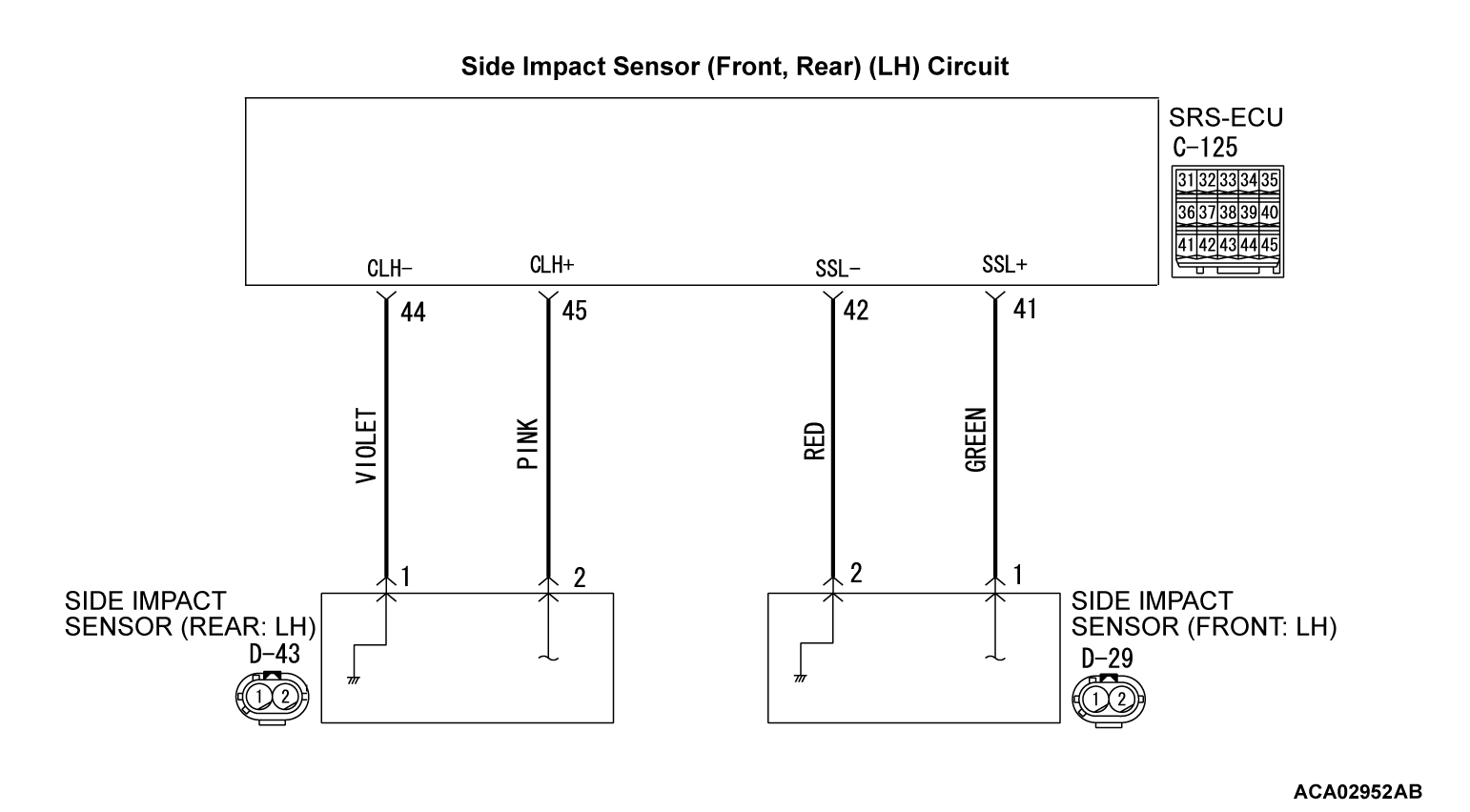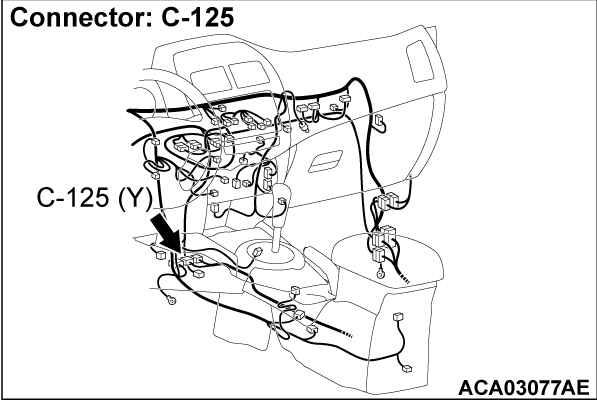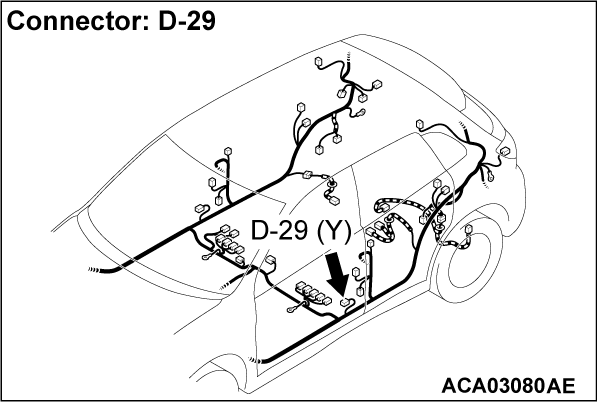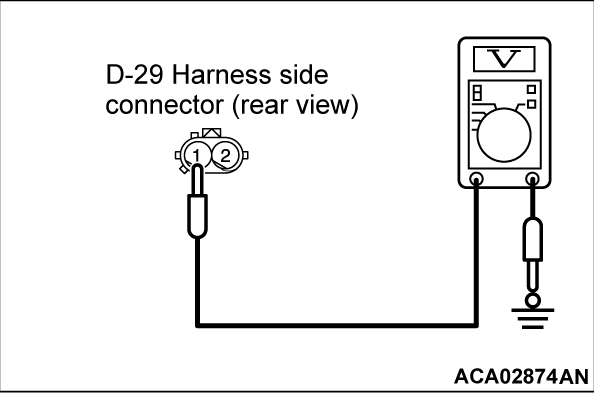DTC B1437: Side Impact Sensor (Front: LH) Voltage Error
| caution | If diagnostic trouble code B1437 is set in the SRS-ECU, always diagnose the CAN main bus line. |
CIRCUIT OPERATION
The side impact sensor transmits acceleration data to the SRS-ECU. The SRS-ECU then determines. if the side and/or curtain air bags should be inflated, and then sends an ignition signal. The side impact sensor also diagnoses itself, and sends a diagnostic trouble code to the SRS-ECU if a problem occurs.
DTC SET CONDITIONS
This diagnostic trouble code will set when the power supply voltage to the side impact sensor (Front: LH) remains less than a predetermined value for one second.
TROUBLESHOOTING HINTS
- Damaged wiring harness or connectors
- Malfunction of the side impact sensor (Front: LH)
- Malfunction of the SRS-ECU
DIAGNOSIS
STEP 1. Using scan tool MB991958, diagnose the CAN bus line.
(1)
| caution | To prevent damage to scan tool MB991958, always turn the ignition switch to the "LOCK" (OFF) position before connecting or disconnecting scan tool MB991958. |
(2) Turn the ignition switch to the "ON" position.
(3) Diagnose the CAN bus line.
(4) Turn the ignition switch to the "LOCK" (OFF) position.
Is the CAN bus line found to be normal?
STEP 2. Recheck for diagnostic trouble code.
Check again if the DTC is set.
(1) Erase the DTC.
(2) Turn the ignition switch to the "ON" position.
(3) Check if the DTC is set.
(4) Turn the ignition switch to the "LOCK" (OFF) position.
Is the DTC set?
STEP 3. Check the side impact sensor (Front: LH) power supply circuit. Measure the voltage at the side impact sensor (Front: LH) connector D-29.
(1) Disconnect the negative battery terminal.
(2) Disconnect side impact sensor (Front: LH) connector D-29, and measure at the wiring harness side.
(3) Connect the negative battery terminal.
(4) Turn the ignition switch to the "ON" position.
(5)
| caution | Do not insert a test probe into the terminal from its front side directly, as the connector contact pressure may be weakened. |
Measure the voltage between D-29 harness side connector terminal 1and ground.
Voltage should measure 9 volts or more
Is the measured voltage within the specified range?
STEP 4. Check the harness wires for open circuit or short circuit between SRS-ECU connector C-125 (terminal No.41) and side impact sensor (Front: LH) connector D-29 (terminal No.1).
Are the harness wires between SRS-ECU connector C-125 (terminal No.41) and side impact sensor (Front: LH) connector D-29 (terminal No.1) in good condition?
![[Previous]](../../../buttons/fprev.png)
![[Next]](../../../buttons/fnext.png)






